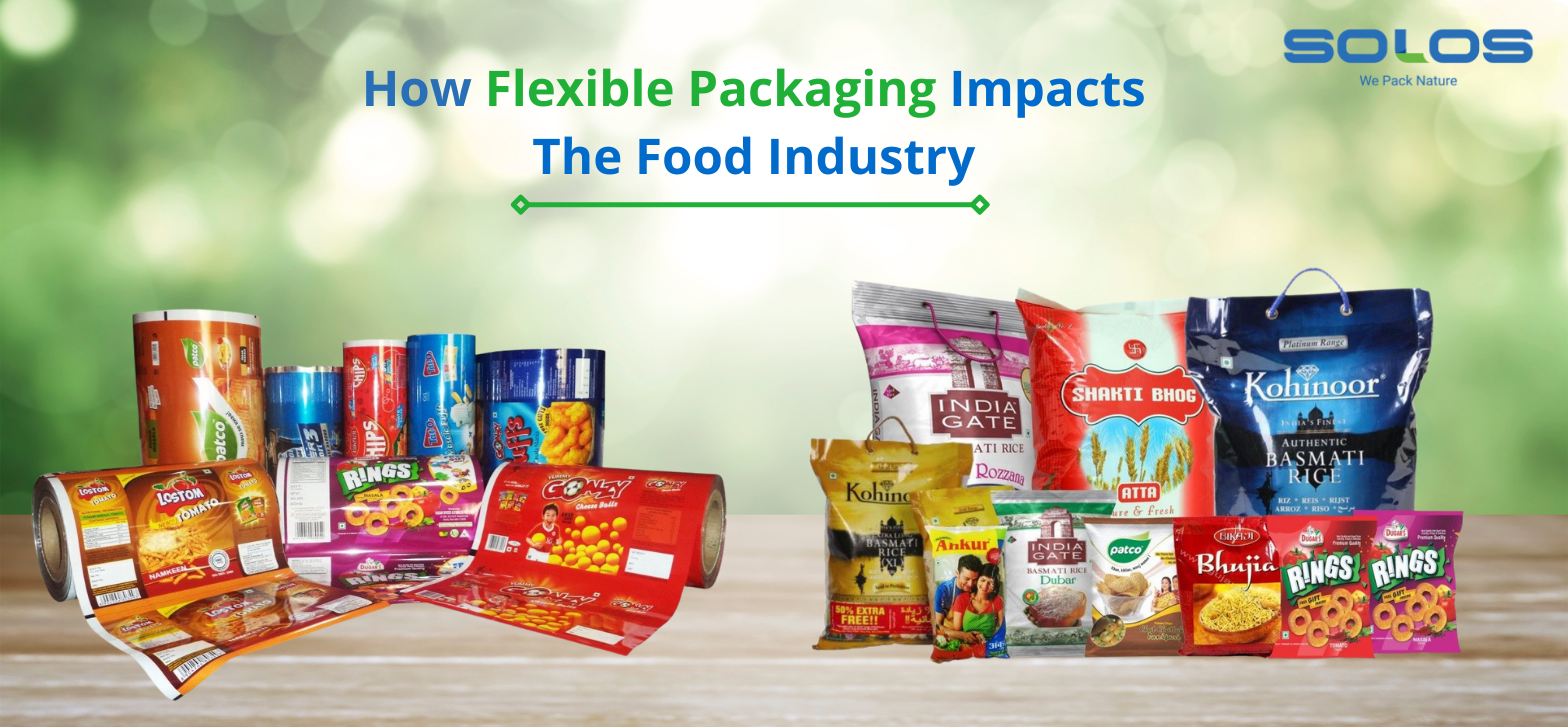How Flexible Packaging Impacts the Food Industry

Today’s ‘on-the-move’ consumers prefer convenience, utility and efficiency when it comes to dispensing and transporting food and beverage. As a result, even liquid food items like soups are increasingly being packaged in soft-sided, collapsible pouches instead of rigid packaging containers. Flexible packaging has emerged as the top packaging solution across the food and beverage industry with food manufacturers adopting flexible packaging for consumer food products of all kinds.
IN this blog, we take an inside look at the impact of flexible packaging on the food industry and why food brands are making the switch to flexible packaging solutions.
What is Flexible Packaging?
Flexible packaging involves packaging products using non-rigid materials like foil, plastic, and paper, to create bags, pouches, shrink films, tubes, carded packaging and other flexible product containers.
The food industry is experiencing a major shift towards flexible packaging, with one of the key reasons being how such packaging opens up doors for bold, creative and eye-catching packaging styles. Standing out in a crowded market has never been easier for food brands.
The lightweight, convenient, and resealable nature of flexible packaging makes it the packaging of choice for food companies and consumers alike. Besides, the food and beverage industry witnessed unprecedented impact from the pandemic. Consumer habits changed significantly, with online purchases and home delivery of food and consumer products increasing exponentially. Food brands are looking to time saving, portable containers and cartons that customers can enjoy anytime, anywhere.
Some of the main food products that embraced flexible packaging include meat, poultry, baked goods, snack food, candy, confections, fruits, sauces, condiments, dairy items, pet food and beverages.
With flexible packaging, food companies enjoy competitive benefits like:
Convenience, Ease of Use and Handling
Flexible food packaging consists of lightweight, easy-to-open, carry and store packages that have resealable features like zip locks and spouts. The convenience factor keeps consumers happy, which creates greater sales opportunities for food brands.
Extended Shelf Life
Flexible packaging uses high-barrier films and airtight seals to ensure that perishable food items stay fresh for long, meaning there’s less food wastage.
Food Safety
With flexible packaging, food safety is augmented with the use of barrier material that blocks out harmful UV rays, moisture, grease and contamination that can damage the food inside.
Eco-Friendly
Flexible packaging offers ecological benefits because it requires less material for packaging and uses less energy to manufacture and transport. Thus, manufacturers using flexible packaging are preferred by consumers due to their reduced carbon footprint and environmental impact.
Branding Functionality
Flexible packaging gives food brands a competitive advantage by creating unique, recognizable packaging designs to maximize shelf appeal and make their products more attractive for consumers.
Looking for flexible packaging options for your food brand? Get in touch with us at Solos Polymers to get the most out of your product packaging.
